🔧 Step-by-Step Answer Walkthrough For Easy Level
Let’s take a quick peek at today’s domino crew: [5-1], [5-5], [6-5], and [3-0]. These four pieces are your puzzle soldiers — each waiting for the right spot to shine. Before diving in, notice how many 5s are floating around. Yep, that’s your first clue — the number 5 is running the show today.
Alright, time to deal with the flashy region that needs to total 15. That’s right — every pip in this space must add up like a perfect math equation. The only domino halves that can get us there? The mighty 5s. With neighboring areas backing up our math, the 5-5 domino stands tall (literally, placed vertically), while the 6-5 slides in smoothly next to it. Big numbers, big energy — this region is locked in!
Next up: the 11 region. Not quite as dramatic as 15, but still demanding precision. After checking what’s left on the board, it’s clear that [1-5] is the right move here. Place it horizontally, and watch how it links perfectly with its neighbors. It’s like a quiet victory — not flashy, just satisfying.
Now for the final touch. The 3-region doesn’t ask for much — just a tidy little sum of three. And who better to handle that job than [3-0]? Slide that one in horizontally and boom — puzzle complete. Simple, clean, and oddly satisfying. If only all logic problems ended this smoothly!
🔧 Step-by-Step Answer Walkthrough For Medium Level
Let’s take a quick look at today’s domino lineup: [6-5], [5-2], [4-4], [4-3], [4-1], [2-1], [0-0]. Think of them as your puzzle dream team — some high rollers, some chill zeros, and a few mid-range all-stars ready to jump into action.
Here’s where things heat up! There’s only one domino flaunting a bold '6' — like the diva of the deck. So, it practically begs to go in the red region. Confirmed by the layout logic, our 6-5 domino fits beautifully vertically. Boom. First placement down. Confidence up.
Over in the green 'equals' zone, balance is everything. Neighboring clues tell us these spaces need matching pip values. Time to bring out the 4’s — the dependable middleweights of the puzzle world. Here’s the move: 1-4 placed horizontally, 4-3 dropped vertically, and the 4-4 double stands tall like a monument to symmetry. It’s not just equal—it’s satisfyingly even.
This one’s the quiet thinker of the grid. To make a total of 2, we combine the simplest of all pairs: a 2 and a 0. Place 1-2 vertically and 0-0 horizontally — a neat little combo that proves minimalism can win puzzles too. If this were Sudoku, this move would be the 'I got this' moment.
Déjà vu, right? Another 2-region, but this one’s got personality. After cross-checking the leftovers, 2-5 slides in horizontally. It’s like that last puzzle piece that just clicks. And there you have it — balance, logic, and a little bit of flair.
Today’s Pips NYT puzzle feels like a coffee-fueled logic sprint — short, sweet, and satisfying when it all lines up. Remember, the trick isn’t guessing; it’s noticing the story each domino tells. Come back tomorrow for a new round of Pips Hint magic — where your logic gets sharper, and your grin gets wider.
🔧 Step-by-Step Answer Walkthrough For Hard Level
Let’s start by checking what we’ve got — the domino lineup looks like [6-4], [6-3], [6-1], [6-0], [5-5], [4-2], [4-0], [3-3], [2-2], [1-1]. Notice something? The number 6 shows up everywhere! That’s your first big clue — those sixes are going to drive the high-number regions later. Keep them close; they’re your puzzle VIPs.
Here’s where the action starts — the region marked 18. That’s the highest total on the board, so obviously, it’s screaming for sixes. Since 6 is the top pip, and we’ve got several, the math checks out. The best combo? [4-6] stands vertically and [0-6] slides horizontally. Boom — the big numbers are locked in, and the board starts taking shape.
Now we calm things down with the green equal region. Equal signs mean balance — both halves must show the same pip count. We glance at what’s left, and 4s practically wave for attention. Drop [4-0] vertically and [4-2] horizontally. It’s neat, tidy, and fits like a well-balanced breakfast.
This zone is a two-for-one deal — one side sums to 3, the other to 10. We need something flexible that connects both logic chains. [1-6] fits the role perfectly, bridging low and high regions at once. Place it horizontally and admire that sweet numerical harmony.
We’re back to our mighty 18 region—not a new one, just continuing the masterpiece. With most sixes already placed, we bring in [6-3] horizontally to complete the count. It fits snugly, extending the logic of Step 2 and finalizing that high-value zone with precision. The 18 region is now officially sealed and perfect.
Time for a twist — the 'Not Equal' region. This means variety is king; no twins allowed. We check the leftovers: [3-3], [1-1], and [2-2]. Three doubles, oops — that’s not variety! Time to get clever. We rotate and reposition so that each half connects differently, ensuring variety across neighboring spaces. The result: [3-3] stands tall, [1-1] rests flat, and [2-2] locks in neatly. Problem solved — diversity achieved!
Ah, the final move — the Number (10) region. We’ve saved the most satisfying one for last. The only domino that gives a perfect ten is [5-5]. Two high-fives in one tile! Drop it horizontally, sit back, and enjoy that moment when everything finally clicks into place.
If you struggled with this one, don't sweat it. Hard-level puzzles are supposed to make you think. The key is recognizing patterns: Scarcity (limited 6 pips); Constraints (that massive 18); Connections (shared borders). Next time you face a puzzle like this, take a breath, count your resources, and look for the highest-value target. Start there, and the rest will flow.
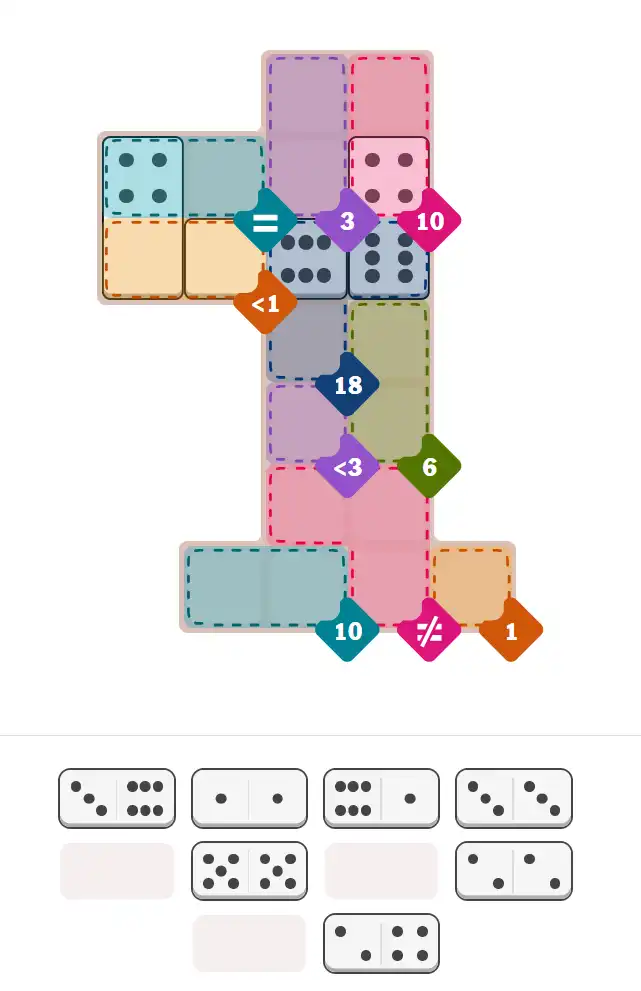
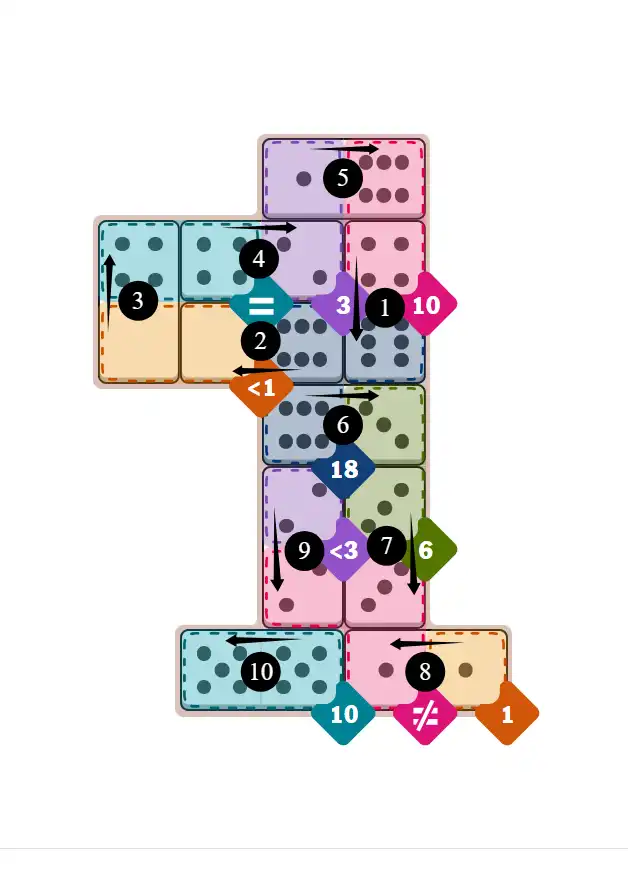
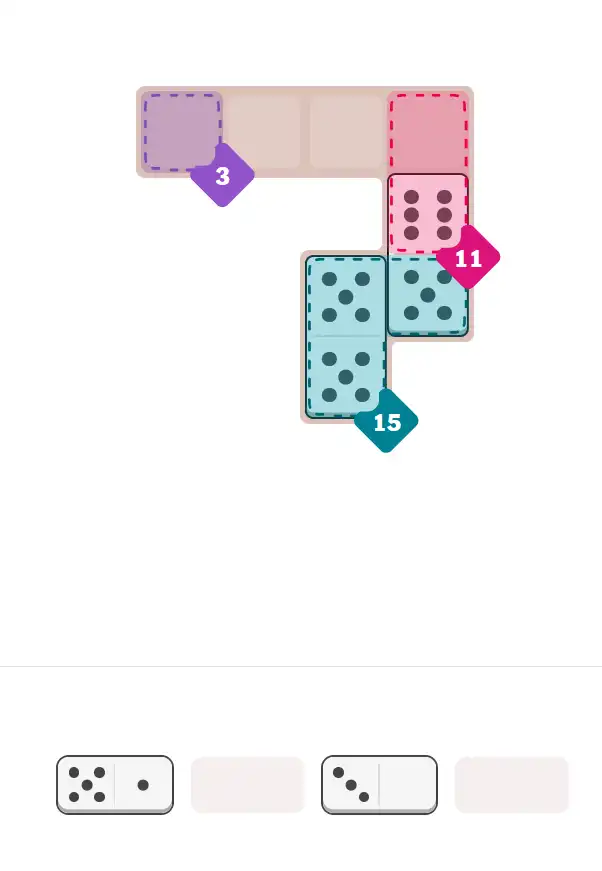
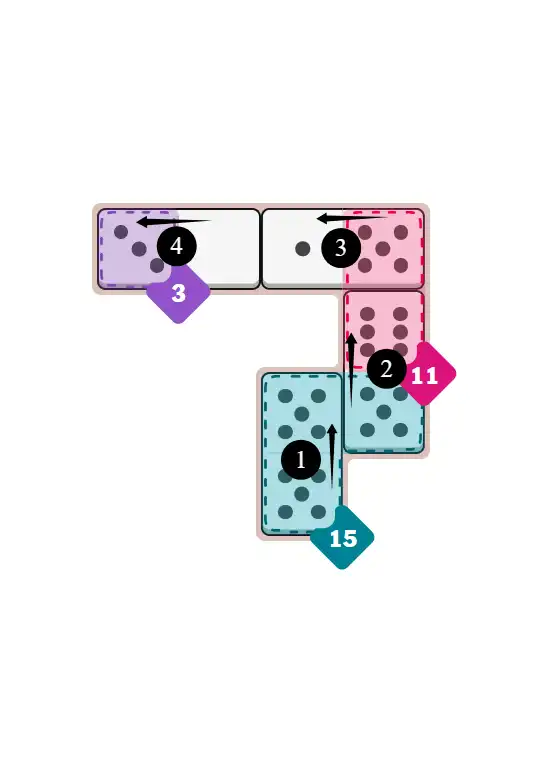

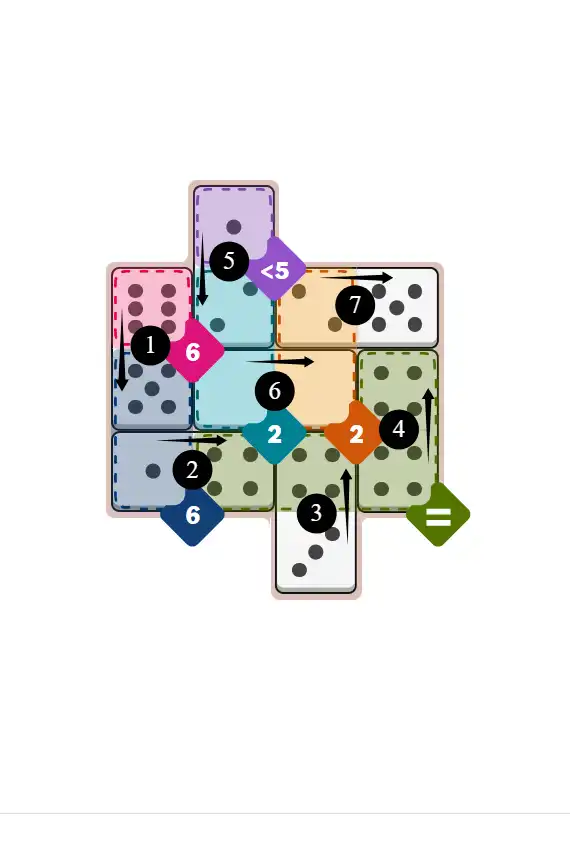
💬 Community Discussion
Leave your comment